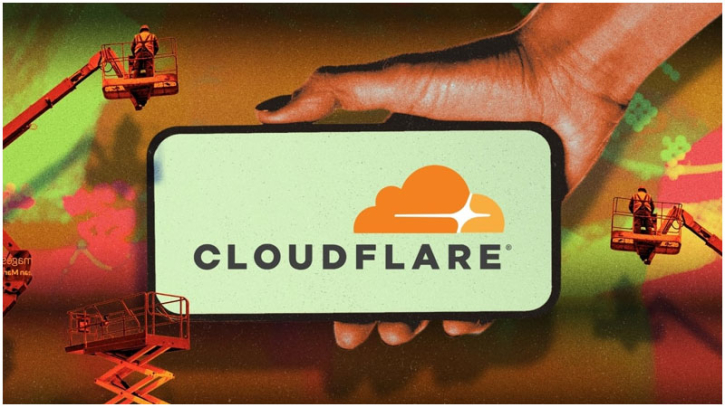Cloudflare, AWS outages expose hidden weaknesses in the Internet

Two of the world’s most relied-upon technology providers—Cloudflare and Amazon Web Services (AWS)—suffered major outages in the past weeks, exposing an uncomfortable truth: the global internet is powerful in scale but alarmingly fragile in its foundation.
The failures showed that the modern web depends on a small set of “invisible” infrastructure giants whose problems instantly cascade across applications, countries, and entire industries.
System held up by few big providers
The outages highlighted the internet’s first major structural weakness: extreme centralization. Today, AWS, Microsoft Azure, and Google Cloud collectively hold roughly two-thirds of the global cloud market. Cloudflare alone acts as a traffic accelerator and security shield for an estimated 20% of the internet.
That consolidation means a single failure—whether in AWS’s US-EAST-1 region or inside Cloudflare’s global edge network—behaves like a shockwave.
When AWS experienced DNS resolution issues a month ago, it triggered more than 17 million user reports and disruptions across 3,500 companies in 60+ countries, hitting major services such as Snapchat, Roblox, and Amazon’s own marketplace.
A separate Cloudflare outage on Tuesday, caused by an oversized configuration file crashing a key traffic management system, crippled ChatGPT, X, Spotify, Shopify and more for nearly three hours. An earlier Cloudflare incident on June 12, 2025—a two-hour and twenty-eight-minute failure—originated in Workers KV storage tied to a third-party cloud service.
These disruptions were caused by internal technical errors, not cyberattacks. But the impact was global.
Professor Alan Woodward, an internationally recognised cybersecurity expert at the University of Surrey, summed up the vulnerability clearly: the outages demonstrated how “very important Internet-based services are reliant on a relatively few major players,” meaning their failures never remain isolated.
Outages produce real financial damage
For companies processing payments, the fallout is immediate, costly, and chaotic. Monica Eaton, Founder & CEO of Chargebacks911 / Fi911, warns that the world underestimates how messy outages become for merchants.
“Customers retry purchases, cards get hit twice, confirmation pages stall, and suddenly you have a wave of confusion that turns into disputes,” she explains. The result is unintended duplicate charges and a surge of chargebacks weeks later.
Eaton argues that businesses need to treat outages as routine operational risks, not rare anomalies. She says: “Track failed and duplicate transactions. Talk to customers before they start guessing what went wrong. Make a quick log of what happened today so you are not trying to piece it together weeks from now when chargebacks start landing.”
Her point is practical rather than alarmist: “None of this is about panic. It is about owning the risks you can control.” And in a world dependent on a handful of critical internet companies, she adds bluntly: “Cloudflare had an outage today. Another provider will have one tomorrow. What matters is whether businesses learn from these moments or keep hoping luck will cover the gaps.”
Any weak link brings down payments
Payments systems are particularly exposed. Even when the initial issue has nothing to do with payments—as seen during last year’s CrowdStrike incident—payments are often among the worst affected.
Tribe Payments’ Chief Information Security Officer, Fadl Mantash, notes: “When a single upstream provider experiences issues, the impact doesn’t stay contained; it cascades across industries.”
He breaks down why: a card transaction depends on cloud platforms, authentication tools, APIs, processors, and card networks. “When any link in that chain fails, the entire journey can break,” he says.
Mantash argues for a “prepper mindset”: “Resilience can’t start at the moment of crisis. Companies need modular systems that isolate faults, rehearsed failure scenarios, and teams that know precisely how to respond when something goes down.”
He adds that resilience sits at the heart of the information-security triad: “Confidentiality, integrity, and availability must become the bread and butter of companies handling sensitive data.”
What will Internet’s next phase be?
The outages are now shaping how governments and corporations plan the internet’s future.
1. Redundancy becomes mandatory
Companies are shifting toward true multi-cloud strategies, ensuring no single provider—AWS, Azure, Google Cloud, or Cloudflare—can paralyze their operations. Governments are also stepping in. The UK has already announced a national outage-response plan after Cloudflare’s disruption affected payments for retailers and Visa.
2. Better architecture, not bigger servers
Many failures expose poor redundancy design at the application level. Even the largest providers cannot compensate for weak architecture.
3. Rise of the decentralized web
Recent outages are accelerating interest in Web 3.0 infrastructure designed to eliminate single points of failure. Decentralized CDNs, IPFS-based storage, Filecoin networks, and decentralized compute providers like Akash Network are becoming viable, fault-tolerant alternatives.
Road ahead?
The major cloud players will remain central to the internet. But the era of blind dependence is fading. The next version of the internet—driven by necessity—will be more distributed, modular, and resilient. The outages of 2025 were not warnings. They were blueprints for what must come next.
.png)




